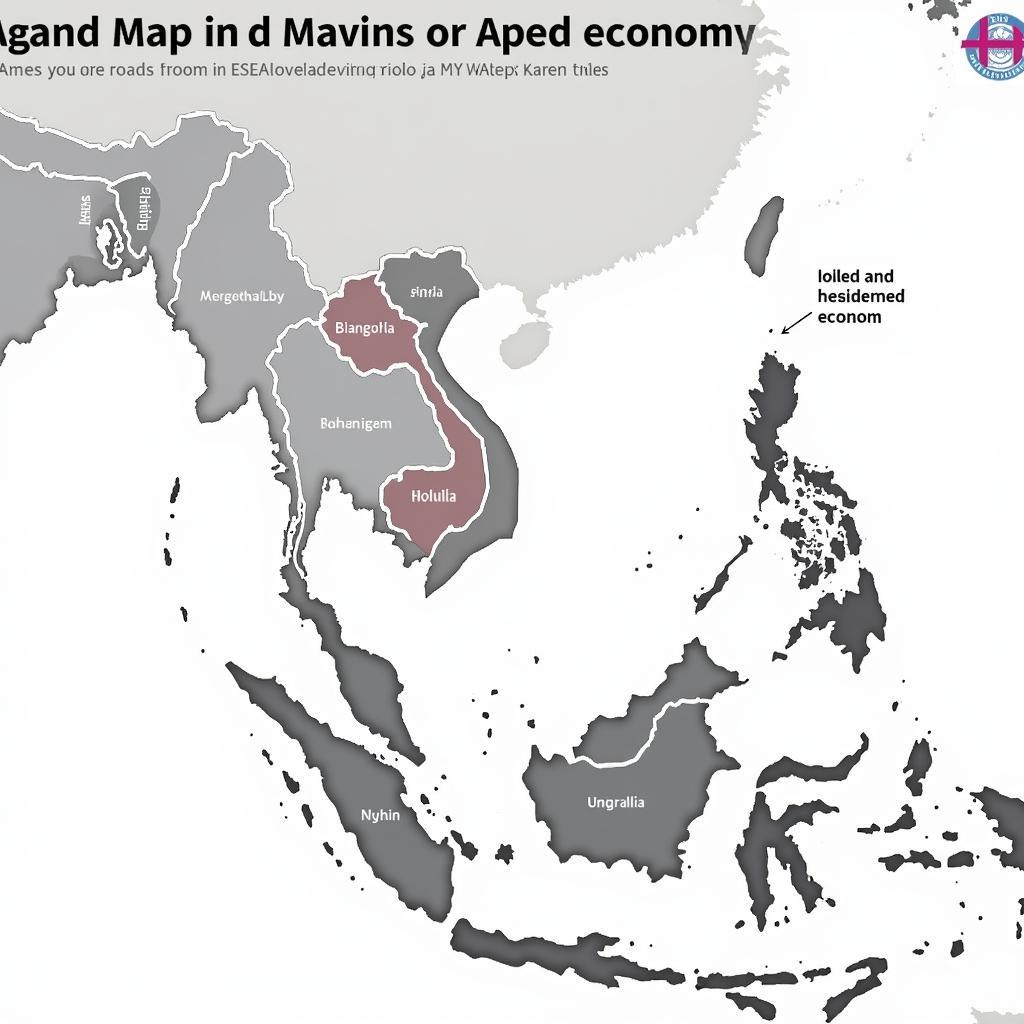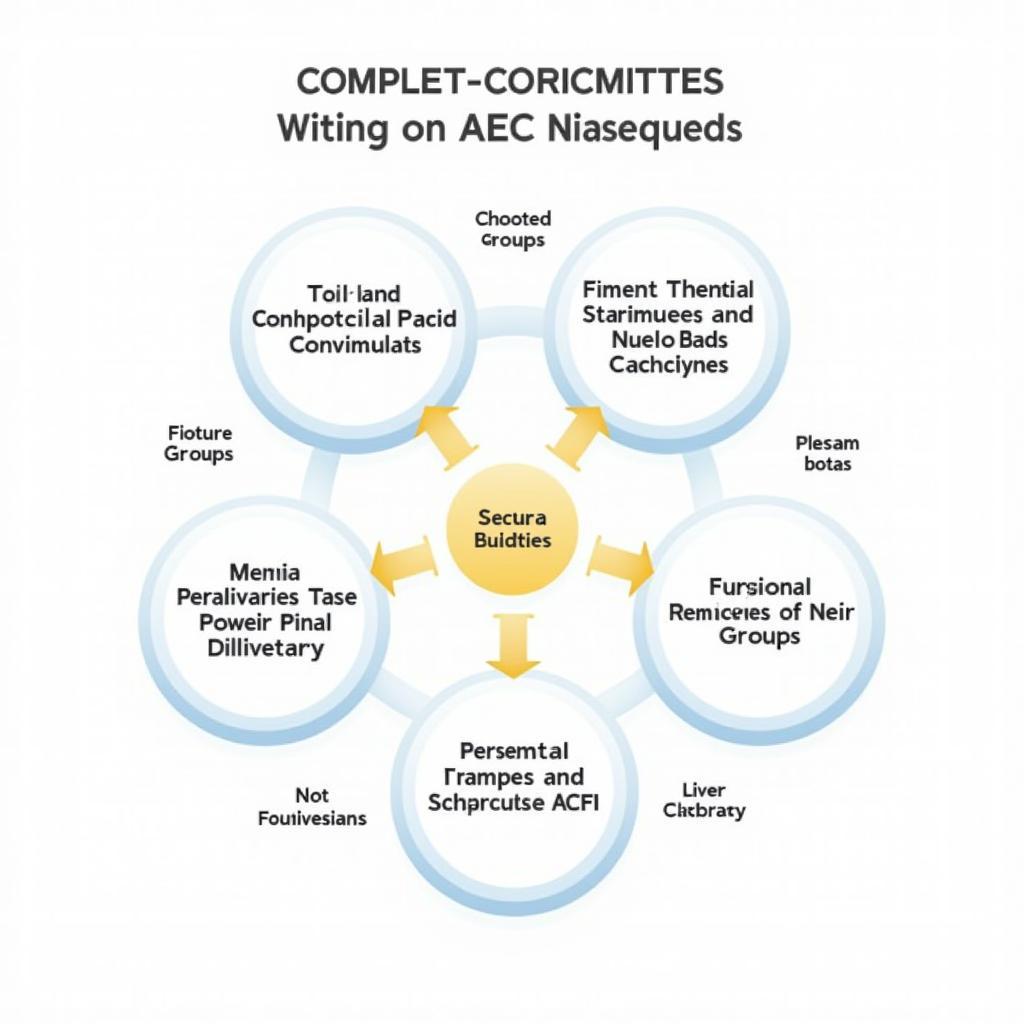The ASEAN Economic Community (AEC) represents a bold vision for Southeast Asia: a single market and production base characterized by free flow of goods, services, investments, and skilled labor. While significant progress has been made since its formal establishment in 2015, the journey towards a fully integrated AEC faces a unique set of challenges.
Uneven Development and Economic Disparity: A Key Hurdle
One of the most significant challenges facing the AEC is the wide gap in economic development among member states. While Singapore boasts a high-income economy, others like Myanmar and Laos are still grappling with poverty and underdeveloped infrastructure. This disparity creates an uneven playing field, making it difficult to implement common policies and regulations that benefit all members equally.
 Uneven Development in ASEAN
Uneven Development in ASEAN
Non-Tariff Barriers and Protectionist Measures: Impeding Trade Flow
Despite efforts to eliminate tariff barriers, non-tariff measures (NTMs) remain a significant obstacle to intra-ASEAN trade. These include complex customs procedures, technical standards, and sanitary and phytosanitary (SPS) regulations that can be difficult and costly for businesses, particularly SMEs, to navigate. Furthermore, the rise of protectionist sentiments globally poses a risk, as member states may be tempted to prioritize domestic industries over regional integration.
Bridging the Skills Gap and Enhancing Labor Mobility
The free movement of skilled labor is a cornerstone of the AEC, aiming to address labor shortages and promote competitiveness. However, differences in education systems, skills recognition frameworks, and language barriers hinder the seamless flow of professionals across borders. Furthermore, concerns regarding job security and social protection in receiving countries can discourage labor mobility.
Strengthening Institutional Capacity and Regulatory Frameworks
Effective implementation of the AEC Blueprint requires robust institutions and harmonized regulatory frameworks. However, ASEAN’s consensus-based approach and the principle of non-interference can sometimes slow down decision-making processes and hinder the enforcement of common standards. Building institutional capacity and fostering greater coordination among member states are crucial for overcoming these challenges.
 ASEAN Institutional Framework
ASEAN Institutional Framework
Leveraging Digital Technology and Innovation for Inclusive Growth
The digital economy presents both opportunities and challenges for the AEC. While digital technologies can foster innovation, enhance connectivity, and promote financial inclusion, they also require robust digital infrastructure, digital literacy initiatives, and appropriate regulatory frameworks to ensure equitable access and benefits for all.
Quoting the Experts
“ASEAN must address the development gap by promoting inclusive growth strategies that benefit all member states, particularly those lagging behind,” says Dr. Nguyen Van Binh, a prominent economist specializing in Southeast Asian development.
Conclusion: A Collective Effort for a Shared Future
Despite the challenges, the AEC holds immense potential for Southeast Asia. Overcoming these hurdles requires a collective effort from all stakeholders, including governments, businesses, civil society, and citizens. By fostering greater economic integration, strengthening institutional capacity, and promoting inclusive growth, ASEAN can truly harness the power of unity and cooperation to achieve its shared vision of a prosperous and integrated region.
FAQ
1. What are the main goals of the ASEAN Economic Community?
The AEC aims to create a single market and production base for ASEAN, characterized by the free flow of goods, services, investments, and skilled labor, thereby enhancing the region’s competitiveness and prosperity.
2. How does the AEC address the issue of uneven development among member states?
The AEC has initiatives aimed at narrowing the development gap by promoting inclusive growth, providing technical assistance to less developed members, and attracting foreign direct investment to boost economic development.
3. What are some key initiatives to facilitate the free flow of goods within the AEC?
The AEC has implemented measures like the ASEAN Trade in Goods Agreement (ATIGA) to eliminate tariffs and reduce non-tariff barriers, simplifying customs procedures, and harmonizing standards to facilitate trade.
Facing Challenges, Seeking Solutions:
For more insights into specific challenges and potential solutions, explore these related articles:
Need assistance navigating the complexities of the AEC?
Contact us today! Our dedicated team at Asean Media Directory is here to provide the information and support you need. Reach us at:
- Phone: 0369020373
- Email: [email protected]
- Address: Thôn Ngọc Liễn, Hiệp Hòa, Bắc Giang, Việt Nam
We are available 24/7 to answer your questions and help you explore the vast opportunities within the ASEAN Economic Community.

